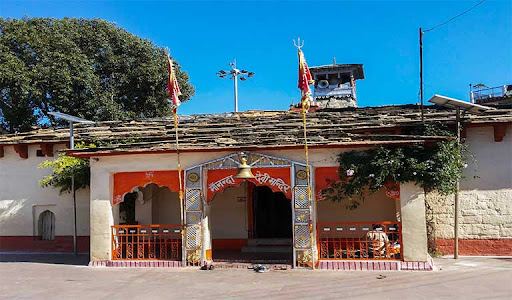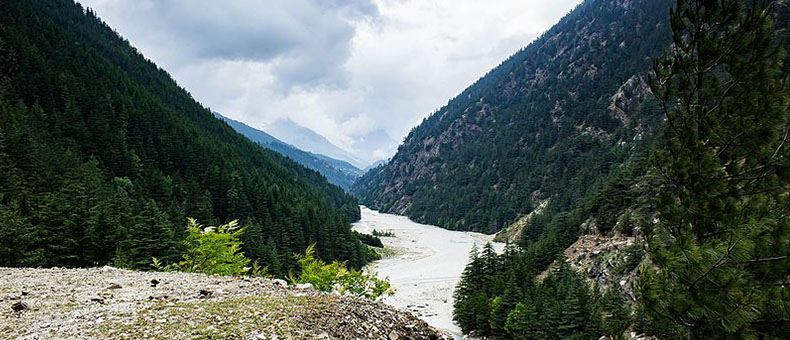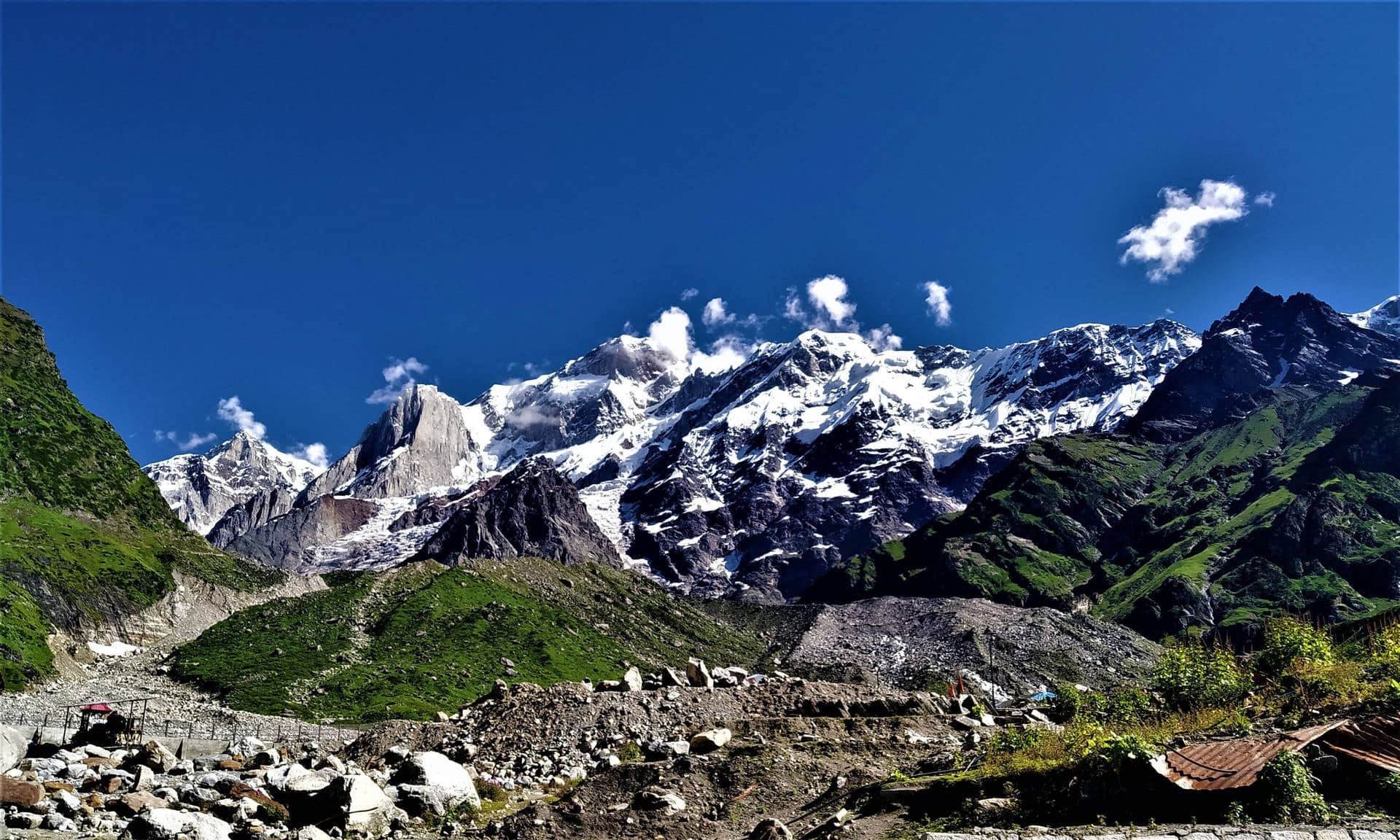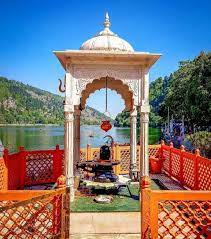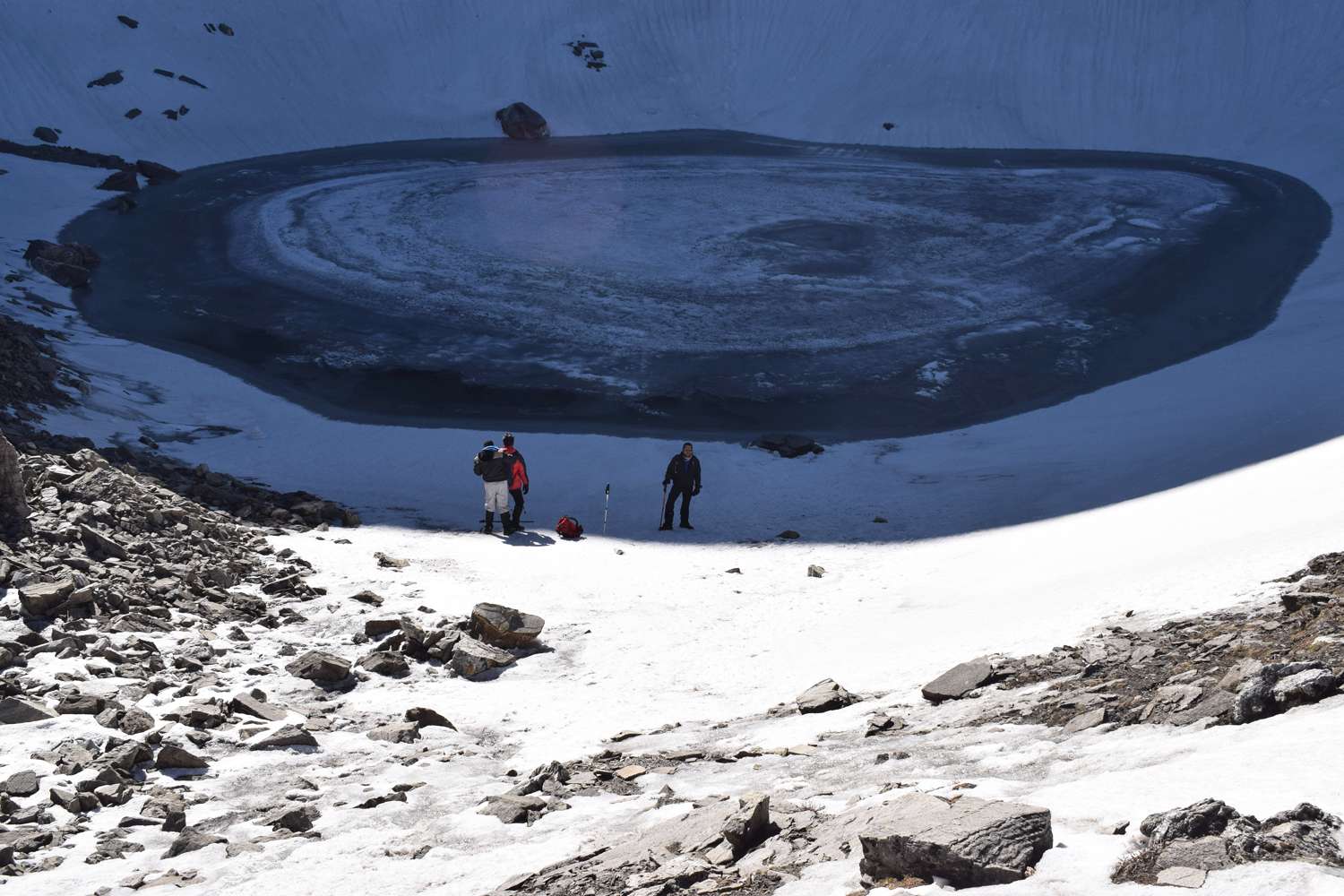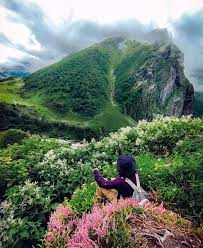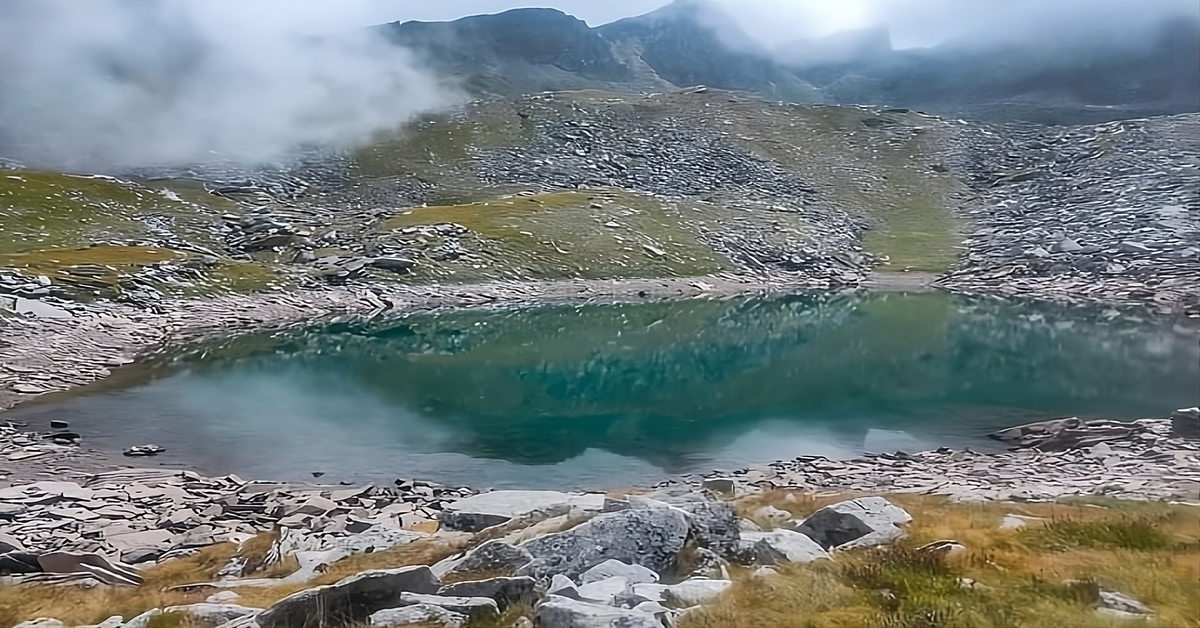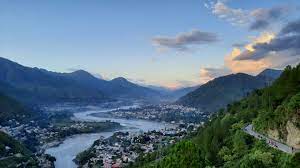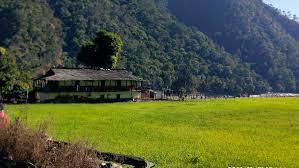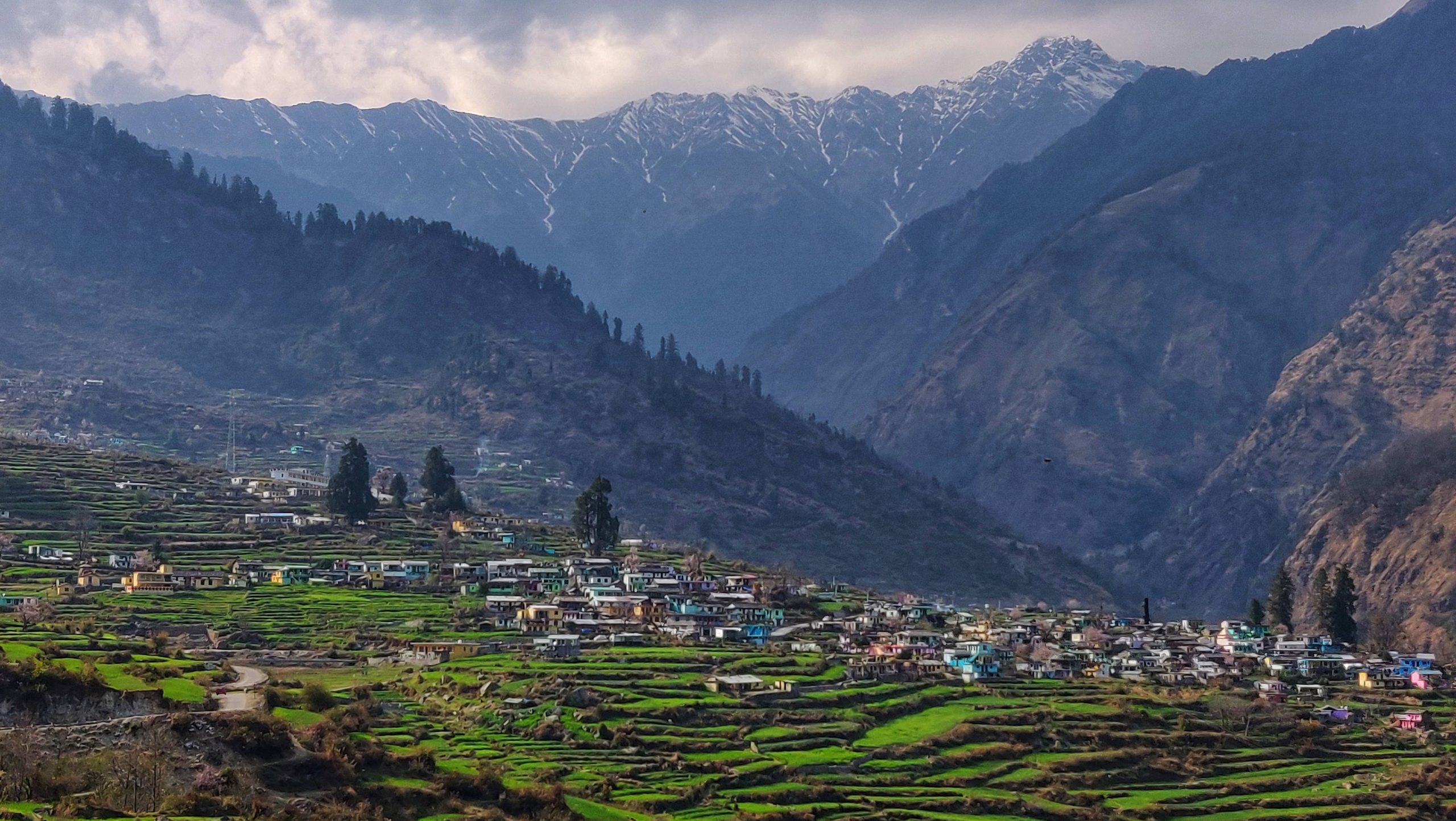There are mountains that look like stone. And then there's Nanda Devi (नंदा देवी), who feels less like a height and more like a presence. She rises to 7,816 metres, 2d simplest to Kangchenjunga in India, however it’s no longer her peak. It’s the manner she stands, guarded, hidden inside her personal ring of peaks, as though the sector outdoors has no right to enter. Around her lies the Nanda Devi National Park (नंदा देवी राष्ट्रीय उद्यान). For folks who get even close, it doesn’t make sense like a park in any respect. It feels like a courtyard, sacred and silent.
The Sanctuary
Chamoli district holds this place, deep in the Garhwal Himalaya. The inner sanctuary, as it’s called, is ringed by walls of peaks so sheer that only one gate exists the gorge carved by the Rishi Ganga. Getting through it is not simple. The river roars low, cliffs rise like jaws, and the way feels more like a trial than a trail.
Cross the gorge, and the land inside is another world. Glaciers feed hidden streams. Valleys run green before they give up to ice. Meadows, high and fragile, hold flowers that bloom for weeks and then vanish with the cold. The goddess stands in the centre, snow flashing even in the cloud.
Forests to Snowfields
The altitude here swings from around 3,500 metres to more than 7,000. Every rise brings change.
At lower slopes, alpine forests of birch (भोजपत्र), juniper (हपुष), and rhododendron (बुरांश) crowd together. In spring, buransh burns red against the sky. Climb a little, and the trees fall away into bugyals, those open meadows the Himalaya is known for. In July, wildflowers scatter like someone spilled colour carelessly. Go further still, and the land hardens. Grass gives way to stone, stone gives way to ice.
Walking here is like turning pages. Each step feels like a new chapter, sharper and colder than the one before.
Life in the Shadow
It is easy to think nothing survives under such weight. But the park holds lives as secretive as the land itself. The snow leopard (हिम तेंदुआ) prowls unseen, leaving only prints and silence. Bharal (नीली भेड़) graze on ridges, watchful and quick. Tahr and goral cling to slopes that look impossible to climb. Black bears scratch marks into trunks lower down.
Birds colour the sky too. The Himalayan monal (मोनाल), bright as fire, startles from underbrush. Golden eagles wheel high, lammergeiers glide wide. Each call, each shadow, feels earned because nothing here comes easy.
A Place Once Closed
By the mid-20th century, climbers and trekkers had begun pressing into Nanda Devi’s inner sanctuary. Too many feet, too much disturbance. By the 1980s, it was clear the land was suffering. So the government closed it. For decades, no one could enter without special permission.
Even today, access is restricted. Most visitors walk only the outer routes, towards Dharansi Pass, along the Rishi Ganga, or to nearby valleys. The heart of the sanctuary stays sealed, as if the goddess herself demanded silence. And maybe that’s right. The pause has allowed forests to grow thick again and animals to move more freely. Our absence has been a gift to them.
What It Feels Like
- Descriptions don’t do it justice. It is the fragments that stay.
- The Rishi Ganga thundered far below, its sound filling every gap of thought.
- A birch grove where your footsteps feel too loud, so you stop just to listen.
- Clouds moving fast, hiding the mountain and then pulling back to reveal her face in sudden light.
- A meadow where flowers, blue, yellow, red, burn bright for a season before frost takes them.
- The air grows thinner, your breath shorter. And yet each inhale feels cleaner, like it strips something away.
The Goddess Beyond Stone
For people here, Nanda Devi is not just a mountain. She is Raj Rajeshwari, the queen goddess. Shepherds, farmers, villagers everyone consists of her name with reverence. Every twelve years, the Nanda Devi Raj Jat Yatra (नंदा देवी राज जात यात्रा) winds for weeks through high passes and remote valleys to honour her. Devotees walk with services, songs, and faith, believing that the adventure itself is a prayer.
This reverence is part of the park. To walk here is not just to trek. It is to step into land already charged with devotion.
A World Heritage
In 1988, UNESCO declared Nanda Devi National Park a World Heritage Site. Later, it was linked with the Valley of Flowers to form a larger protected area. To outsiders, the tag signals importance. To locals, it only confirms what they already knew that this place has always been worthy of reverence.
Her sanctuary is not just scenic. It is a rare piece of the Himalaya still intact, still pulsing with both wildness and worship.
Fragile and Fierce
The Himalaya feels eternal when you look at it, but the park is fragile. Too much grazing, too many boots, too much noise these things scar it quickly. Closing the inner sanctuary was not just policy. It was survival.
Even with restrictions, challenges remain. Climate change pushes glaciers back. Heavy rains trigger landslides. The goddess may look untouchable, but her home is vulnerable. And yet, resilience shows too. Forests root deeper. Rivers cut new paths. Life bends, then returns.
What You Carry Back
- Long after leaving, the memories refuse to fade.
- Smoke from a villager’s fire is clinging to your clothes.
- The outline of Trishul glowed in the first light.
- The nervous pause of a bharal before it vanished into rock.
- A whispered prayer at the sight of the goddess peak, not planned, just pulled from you.
These fragments settle deep, reminders that for a short time you were allowed into the edge of something sacred.
More Than a Park
Call it a sanctuary, call it a national park, call it a heritage site it doesn’t matter. What matters is the feeling it leaves. Nanda Devi cannot be simply climbed or photographed. She is witnessed, from a distance, with respect.
To walk in her shadow is to realise that the Himalaya is not only geography. It is spirit, held in stone and snow. And in the circle of ridges that guard her, that truth feels undeniable.

